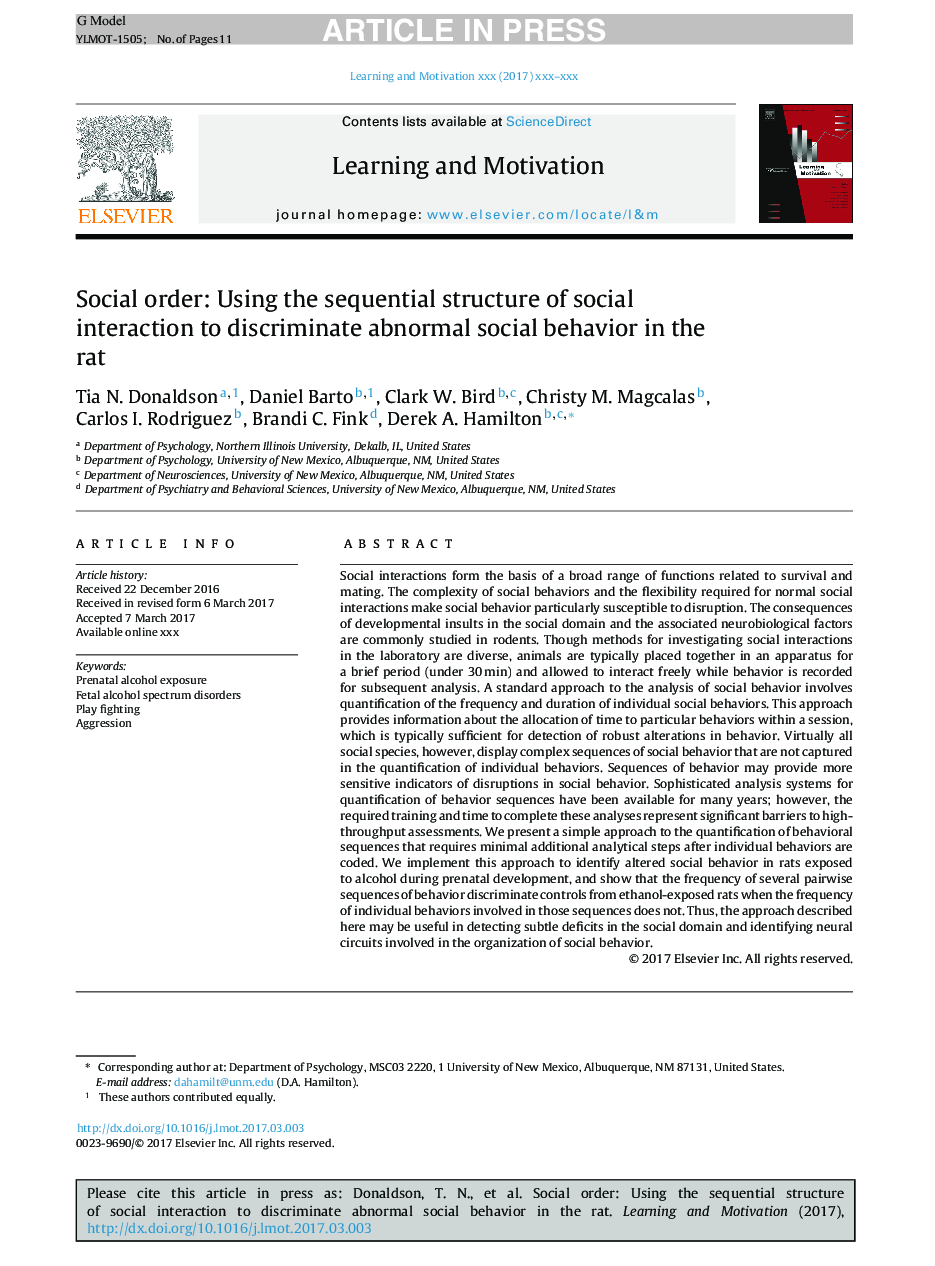| کد مقاله | کد نشریه | سال انتشار | مقاله انگلیسی | نسخه تمام متن |
|---|---|---|---|---|
| 7275839 | 1473507 | 2018 | 11 صفحه PDF | دانلود رایگان |
عنوان انگلیسی مقاله ISI
Social order: Using the sequential structure of social interaction to discriminate abnormal social behavior in the rat
ترجمه فارسی عنوان
نظم اجتماعی: با استفاده از ساختار متوالی تعامل اجتماعی برای تبعیض رفتار اجتماعی غیر طبیعی در موش صحرایی
دانلود مقاله + سفارش ترجمه
دانلود مقاله ISI انگلیسی
رایگان برای ایرانیان
کلمات کلیدی
قرار گرفتن در معرض الکل قبل از تولد، اختلالات طیف الکل جنین، مبارزه بازی، پرخاشگری
موضوعات مرتبط
علوم زیستی و بیوفناوری
علم عصب شناسی
علوم اعصاب رفتاری
چکیده انگلیسی
Social interactions form the basis of a broad range of functions related to survival and mating. The complexity of social behaviors and the flexibility required for normal social interactions make social behavior particularly susceptible to disruption. The consequences of developmental insults in the social domain and the associated neurobiological factors are commonly studied in rodents. Though methods for investigating social interactions in the laboratory are diverse, animals are typically placed together in an apparatus for a brief period (under 30Â min) and allowed to interact freely while behavior is recorded for subsequent analysis. A standard approach to the analysis of social behavior involves quantification of the frequency and duration of individual social behaviors. This approach provides information about the allocation of time to particular behaviors within a session, which is typically sufficient for detection of robust alterations in behavior. Virtually all social species, however, display complex sequences of social behavior that are not captured in the quantification of individual behaviors. Sequences of behavior may provide more sensitive indicators of disruptions in social behavior. Sophisticated analysis systems for quantification of behavior sequences have been available for many years; however, the required training and time to complete these analyses represent significant barriers to high-throughput assessments. We present a simple approach to the quantification of behavioral sequences that requires minimal additional analytical steps after individual behaviors are coded. We implement this approach to identify altered social behavior in rats exposed to alcohol during prenatal development, and show that the frequency of several pairwise sequences of behavior discriminate controls from ethanol-exposed rats when the frequency of individual behaviors involved in those sequences does not. Thus, the approach described here may be useful in detecting subtle deficits in the social domain and identifying neural circuits involved in the organization of social behavior.
ناشر
Database: Elsevier - ScienceDirect (ساینس دایرکت)
Journal: Learning and Motivation - Volume 61, February 2018, Pages 41-51
Journal: Learning and Motivation - Volume 61, February 2018, Pages 41-51
نویسندگان
Tia N. Donaldson, Daniel Barto, Clark W. Bird, Christy M. Magcalas, Carlos I. Rodriguez, Brandi C. Fink, Derek A. Hamilton,
